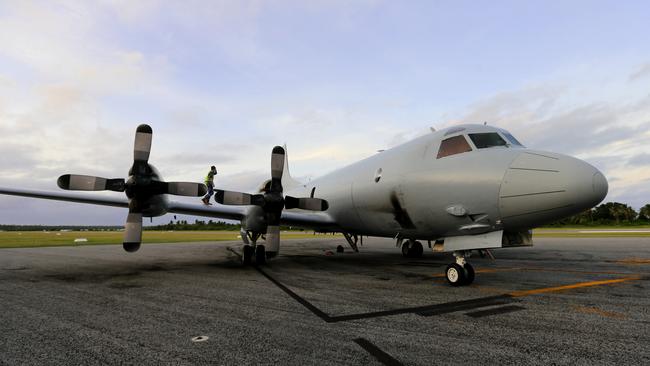RAAF P3 submarine hunter/killer retiring after 50 years’ service
Next year, after half a century of meritorious service, the RAAF P3 submarine hunter/killers will be finally withdrawn.

Next year, after a half-century of meritorious service, the RAAF P3 submarine hunter/killers finally will be withdrawn.
I recently shared a corporate jet cockpit with a former RAAF P3 captain. We had something in common as I was an RNZAF navigator in an anti-submarine warfare role. I was also the navigator on the last military Sunderland flying boat flight in April 1967.
It was interesting to discuss advances in the detection, location and killing of warfare’s most lethal weapon.
The Sunderland relied on radar to detect a submarine’s periscope or snorkel and passive sonobuoys to track and then attack it with depth charges that would crush the boat’s hull. The navigator’s role switched to TACCO (tactical co-ordinator) and bomb-aimer for weapons release.
The P3 has a crew of 12: two pilots, two flight engineers and three navigators, one of whom would be the TACCO to control the tactical situation and the attack, and five air electronic officers.
The P3, as well as radar, could lay a wide area pattern of passive directional sonobuoys. Once a sonar signature was detected, the TACCO, using tactical information from his AEOs, would instruct the pilots where to fly as they localised their prey with further sonobuoys.
Then, with a very low level flyover of the submerged submarine, the MAD (magnetic anomaly detector) operator, if contact was realised, would call “mad, mad, mad” and an Mk44 or Mk46 homing torpedo would be released. The MAD stinger is that boom that extends from the tail of the Orion.
The torpedo in passive mode would then circle in a helical pattern as it descended to 1500 feet while hunting for its prey. Once detected, it would go active, acquire the target and accelerate to attack speed.
The P3 could remain airborne for 16 hours on patrol at 1500 feet with two engines shut down. When attacking, it could red-line at an impressive 411 knots with power to spare from its 4600bhp turboprop engines and an emergency combat boost to 5300bhp.
The P3 also had depth charges and later in its life acquired Harpoon anti-ship missiles.
The P-8 Poseidon, which has replaced the P3, is the new anti-submarine warfare warrior for the RAAF. It has a big task on its plate.
Nuclear submarines are the preferred choice of navies that can afford them. They run silent and run very deep for months at a time, which makes detection very difficult.
As well, it is believed that the Russian nuclear attack submarines may have the ability to outrun homing torpedoes.
This game of cat and mouse favours the mouse.
Byron Bailey is a former RAAF fighter pilot who flew B777s as an airline captain.


